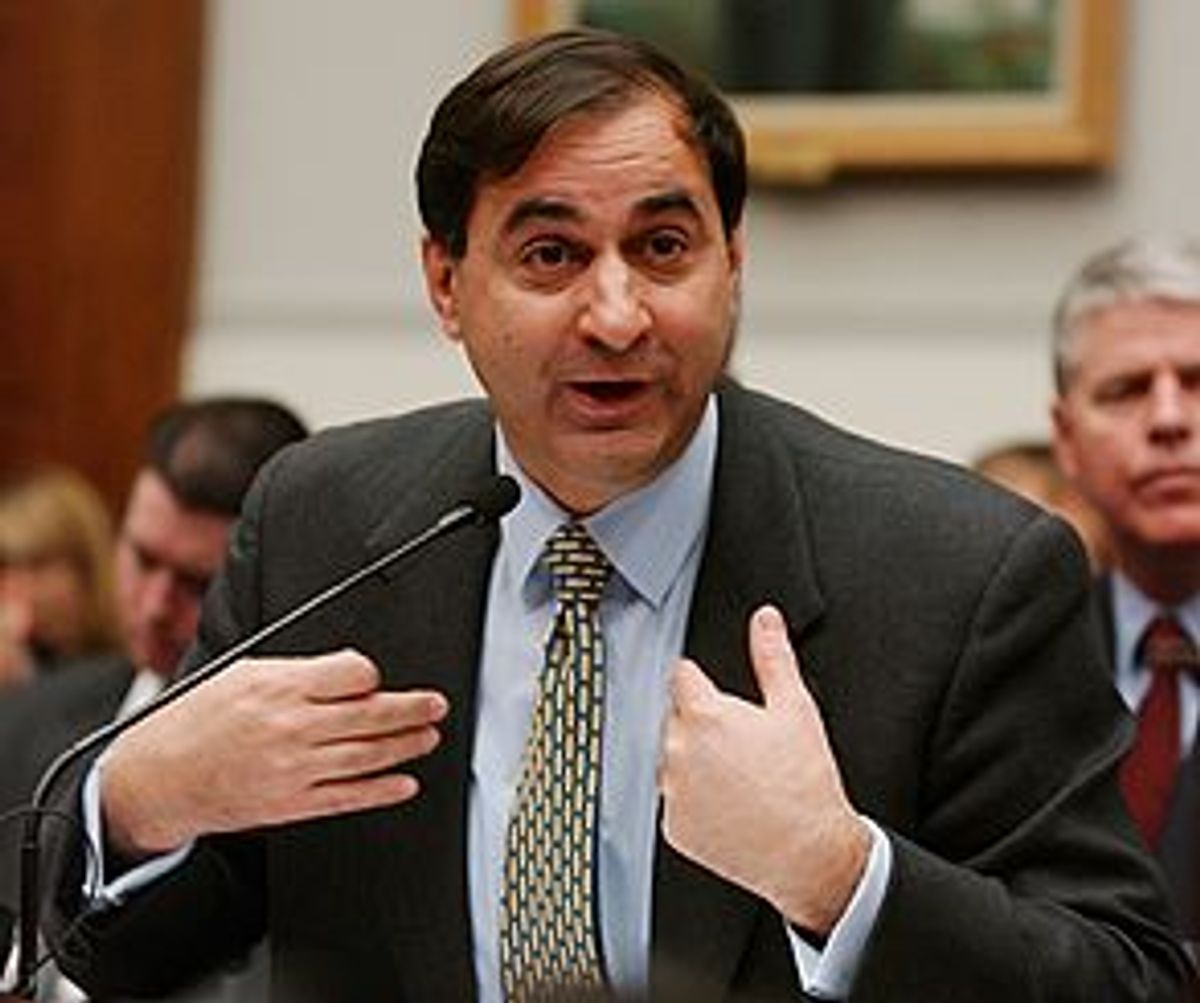Earlier this week, Rep. Bernie Sanders,I-Vt., confronted Joseph Berardino, Arthur Andersen LLP's CEO, with a global hit list of Arthur Andersen's allegedly fraudulent accounting practices: Sunbeam, Waste Management, Asia Pulp and Paper and a bankrupt insurance company in Australia.
Were there more instances of alleged accounting fraud involving Arthur Andersen, Sanders wanted to know?
Berardino managed to do what he'd been doing during most of the hearing, which was not to answer the question.
Berardino did not mention, for instance, Andersen's alleged accounting fraud in the collapse of the Baptist Foundation of Arizona, possibly the largest bankruptcy of a religious foundation in the history of the United States.
Instead, Berardino said at one point during the hearing: "We are human beings, and we do not get it right all the time."
Despite Berardino's evasions, Congress is finding out more about Andersen's history. On Feb. 7, congressional Democrats in Washington are expected to call a news conference to link the scandal-ridden Enron debacle to the bankruptcy of a Phoenix-based Southern Baptist religious foundation called the Baptist Foundation of Arizona (BFA).
Practically anyone in Arizona will tell you the Democrats are about three and a half years too late, largely because the national press in its East Coast provincialism refused to cover the Baptist Foundation collapse in any meaningful way, if at all.
The link between Enron and BFA that the Democrats will announce is the way Arthur Andersen handled the books of both failed companies -- by giving them two thumbs up even as they were plummeting toward bankruptcy.
The long-ignored collapse of BFA is every bit as tragic as the Enron failure. In 1999, BFA filed for bankruptcy in Phoenix, leaving in the lurch 13,000 mostly elderly investors who collectively lost more than $590 million. Arizona Attorney General Janet Napolitano called the BFA collapse the largest bankruptcy of a religious nonprofit in the history of the United States.
BFA investors are Christian folk who live throughout the United States, men and women who assumed they'd invested their money wisely because they believed neither Arthur Andersen accountants nor the pious Southern Baptist salesmen who promoted BFA's high-interest notes would deceive them. So far, BFA investors have received pennies on their dollars from bankruptcy settlements, but they will share part of a $21 million settlement from BFA's lawyers at the Phoenix law firm Jennings, Strouss and Salmon, who have not admitted wrongdoing.
But, of course, the deep pockets in both the Enron and the BFA debacles now belong to Arthur Andersen, which claims to be a $7 billion company.
All of this explains why two Arizona attorneys general have tried to force Andersen to pay back the BFA victims.
So far, they've failed.
But they keep trying.
Currently, Andersen faces action by the Arizona Board of Accountancy and Arizona Attorney General's Office, as well as two ongoing civil lawsuits in state court alleging Andersen's accounting fraud deceived BFA investors. And several of BFA's key managers have been indicted for alleged white-collar fraud in state court, although all await their trials.
In Arizona, Andersen has adamantly denied wrongdoing, pointing its finger instead at the company it audited and accusing BFA management of hiding fraud from the auditors. You can expect to hear a lot of that reasoning from Andersen in the Enron case.
But there are many more similarities between BFA and Enron. In public records relating to the BFA collapse in Arizona, Andersen is accused of:
Instead, Andersen repeatedly gave Enron and BFA the green light, thus allegedly misleading investors who continued pouring their money into the failing companies.
All of this explains why in Arizona, some BFA victims have braved the hot sun from time to time to picket Andersen's elegant headquarters in Phoenix. They've even thought up a song, which not only dates them, but also expresses their bitter sentiments. To the tune of "Where Have All the Flowers Gone," the BFA victims like to sing:
"Where has all the money gone?
Just Ask Arthur Andersen ..."
It looks as if the Democrats have learned the song, too.



Shares